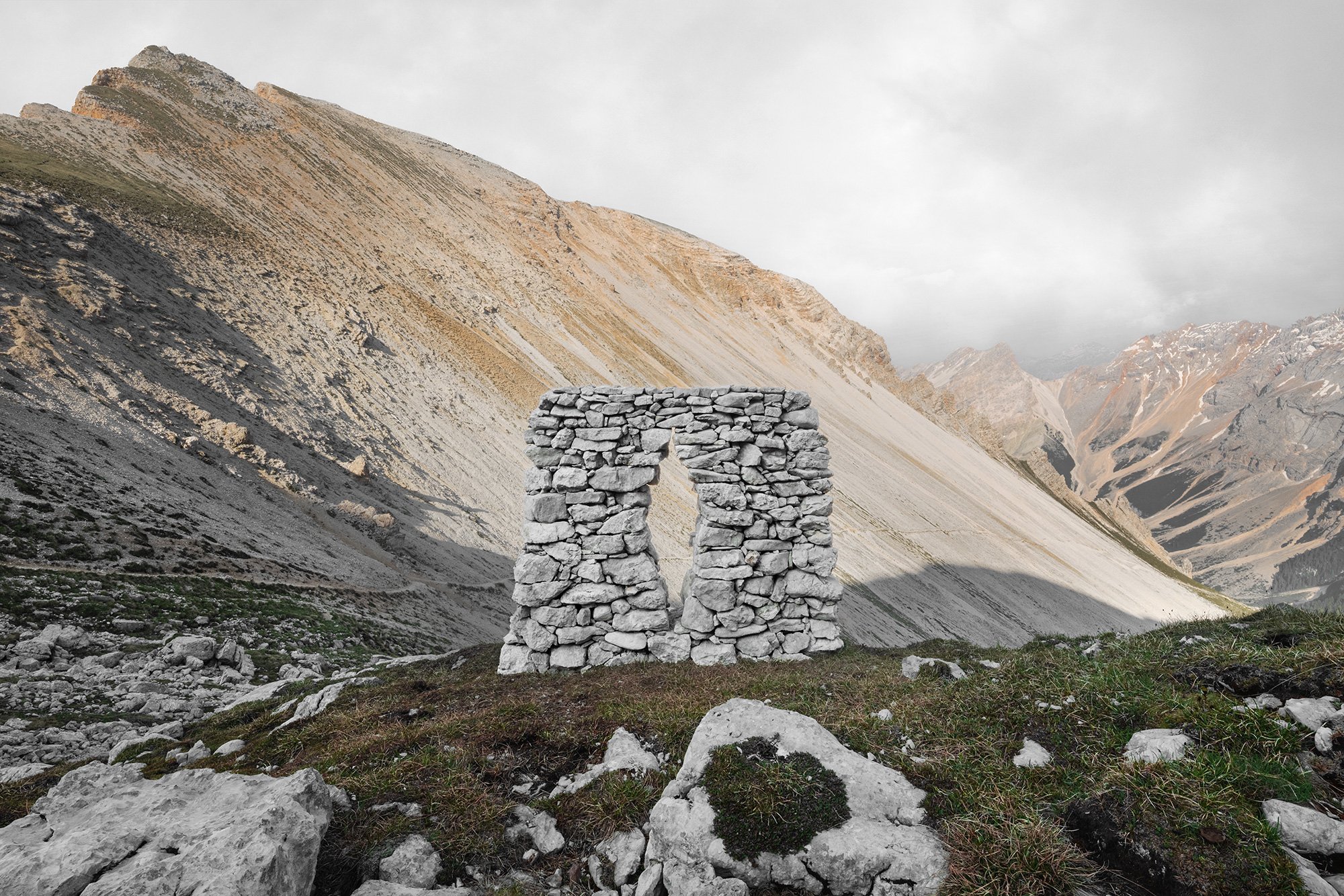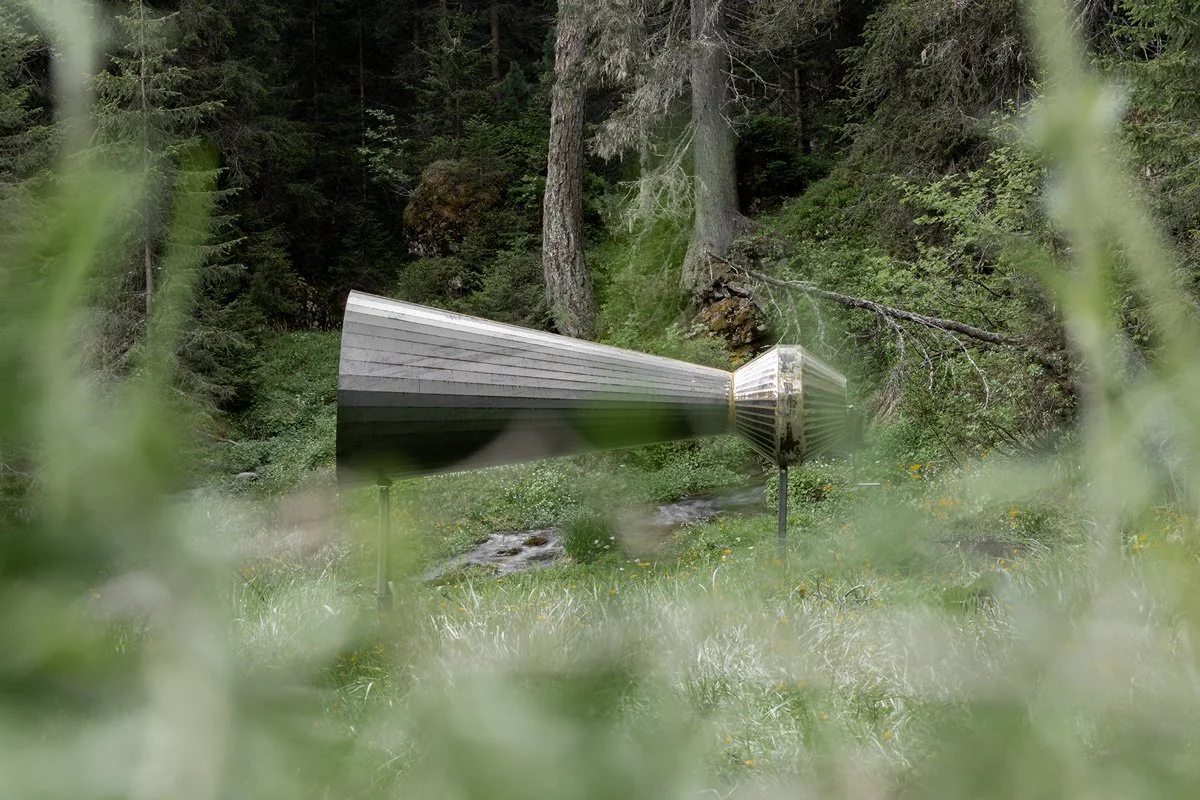Stone Age
Hama Lohrmann
The anthropologist Claude Lévi-Strauss used the metaphor of the “bricoleur” to contrast it with that of the engineer, thus illustrating two different ways of building and solving problems. The bricoleur adapts to circumstances and creates solutions by adapting to what is available, while the engineer works with specific tools and materials, designed a priori. Between the two approaches, Lohrmann adopts the more ecological and environmentally friendly one: his works are made with local materials and have an ephemeral nature. “Stone Age” was also built this way, and as the title suggests, the only technology employed was that of physical labor and manual technical skill. Among other things, the construction of dry-stone walls is protected by UNESCO as intangible cultural heritage, as is transhumance, which passes right through here every season.





Exhibit place Passo di Sant’Antonio
Every spring and at the end of each summer, the transhumance passes over the Sant’Antonio Pass (in Ladin, ‘Ju de Sant Antone’, 2,466 m a.s.l.): the seasonal migration of cattle from the village of La Val to the mountain pastures of Fanes and then back down to the stables of the farms at the bottom of the valley. This tradition has been going on for centuries and right at the pass stands a wooden chapel dedicated to St Anthony, the protector of animals. Even today, people and animals in La Val must endure the considerable effort of the ascent (and descent) across the steep scree slopes of this pass. Any help, including that of the saints, is welcome!
The highlight of the transhumance is when the herds return to the valley in early to mid-September, depending on the weather conditions at the time. This event, common to many Alpine valleys, but now increasingly rare, is called désarpa in Valle d’Aosta; desmalgada in Val di Non, Sole, Rabbi, Pejo; desmontegada in Primiero; desmonteghea in the Belluno Dolomites; Almabtrieb in the Swiss, Austrian, German-speaking valleys. In Ladin there is the verb ‘desmuntè’, demonticare in Italian, but not a noun. In any case, on this occasion, the “malgari” and “malgare” (shepherds’ huts) lead the cows to the valley floor decorated with beautiful flowers, ornaments and garlands in a festive atmosphere and on occasions open to the public.
Transhumance is such an ancient and transnational element that in 2019 UNESCO, following an Italian, Austrian and Greek candidature, included this tradition in its list of the World Heritage of Intangible Culture, i.e. the knowledge, traditions, folklore, customs, beliefs and languages that are an integral part of the cultural heritage of a place and that UNESCO protects because they are ‘fundamental to maintaining cultural diversity in the face of globalisation, supporting intercultural dialogue and encouraging mutual respect for different ways of life’. It is not only natural monuments (such as the Dolomites), archaeological or historical monuments that are on the UNESCO list, but also the traditions of peoples. South Tyrol and Val Badia also preserve two other knowledge-traditions that appear on the lists of intangible cultural heritage: mountaineering and the art
of the hunting horn.
The artwork can be placed toward the end of the pastures where many cows graze from June to September (so the installation could be damaged by the animals), or beyond the fence where the herds can no longer reach- where the pasture ends and the scree leading to St. Anthony’s Pass begins. Or it can be placed at the top of the pass at over 2600 meters. Here, however, there is a lot of wind, the ground for fixing the works is very stony but the rocks cannot be drilled to allow stable anchorages.












